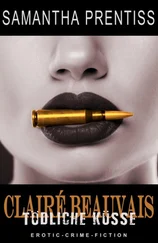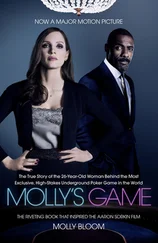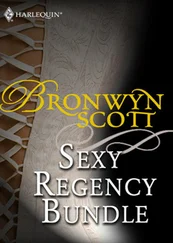“It’s good,” Marge assured him over and over, though in her voice there was a tinge of How long can this go on for? “The best things can take the longest to discover, right? Don’t they?”
“Let’s just hope this isn’t a Van Gogh situation,” James said. “Let’s just hope I’m not dead before I can afford to be alive.”
Finally, after five years of odd jobs and rejections, James got a call from Seth, the New York Times arts editor’s squeaky assistant, who told him his article on the painter Mary Heilmann — whose Crayola-colored works made “this reviewer’s heart feel like it was drinking water”—was going to print tomorrow.
“Without any edits?”
“There were no edits necessary, Mr. Bennett,” squeaked the assistant. “The editor said it was fresh.”
James had hung up the phone and jumped in the air. Then he sat on the floor. Then he leaped up again and ran outside, looked up and down the street, realized he had gone out there for no reason at all and turned back around to go inside, and sat down at his desk to smile until he couldn’t anymore because his face hurt.
He and Marge celebrated by going out to dinner at a medium-expensive place that had been recommended by “everyone”—meaning everyone at the Agency office, the sort of crowd that knew what frisée was, how to pronounce haricot vert— where Marge paid. Then they had sex twice.
“You proud of me?” he said as they lay in bed.
“Extremely,” she said, nuzzling her face into his chest.
And that was enough for him. He could have died that day and had no regrets, with Marge’s extremely lingering in his ear.
After the article ran, James received a check in the mail and alongside it a medium-size package. The check was for a thousand dollars and the package was a Mary Heilmann painting, one of the pink-and-black ones, with a note from Heilmann herself, reading, So your heart will never be thirsty. XO, MH. James spent the thousand immediately, on a drawing by the artist and poet Joe Brainard that he had seen at a makeshift gallery in the East Village the week before — a sketch of a box of cigarettes, which made James’s eyes haze over with a moony, adventurous blue. He hung the two pieces next to each other in his study — small emblems of his small success, reminding him daily that there was beauty in the world, and that he could feel that beauty in his body, and that he could put that beauty onto a page for others to experience. This was how he was meant to engage with society, he thought: from the little ship of his study, through the magnificent portal of the New York fucking Times .
Over the next years, as the seventies wore on and James and Marge pushed into their late twenties and then, as if it happened overnight, their thirties , people began to notice the articles, and respond to them. They called it a sixth sense — James’s surreal ability to pick out the exact thing that made a work of art good or not, and in extrapolation the ability to hone in on that goodness from far away: years in advance or across a crowded room. James would look at a sculpture and find the exact arc where it became interesting (the arc that felt like an airport and blinked a whitish gray), the precise point on the map of a painting to stick his figurative pin, the mark that made the whole thing worth making at all. He wrote everything he saw behind his eyes when he looked at art— Brice Marden preoccupies me like a shoe that has stepped in gum , or Schnabel, not to be funny, has too many plates in the air —and people told him it was genius, that he was changing the very nature of art critique, that they wanted to take him out for a drink sometime, pick his brain, get his opinion on the new Sol LeWitt.
All of this led to a sort of trust: the readers trusted him to tell them whether they should spend their Saturday at a show; the artists trusted him to write about them with intelligence and fairness — even if the reviews weren’t always positive, they always reflected something important and intrinsic to the work.
“I appreciate you, you know that?” a painter named Audrey Flack told James at a gallery after-party. James, the week before, had written that Audrey’s hyperrealistic painting of a handful of wrapped candy was as stale as those sorts of candies get: the kinds that have been sitting too long in a grandmother’s foyer. James had been avoiding Audrey, but here she was, being nice.
“You thought about it,” she said. “You thought about it, and you got it exactly right. The feminism is embodied in that precise staleness you wrote about — that stuffy, indoor feeling— and you got it. ”
This conversation led to a studio visit, where James ended up doing a complete 180 on Flack’s work, and leaving with one of her paintings — it depicted a shrine of sorts, incorporating Marilyn Monroe’s picture, a set of ripe pears, a burning candle, and a goblet full of silvery pearls. The painting, tucked under James’s arm, smelled of all of the chickens his mother had never roasted.
Slowly at first and then exponentially, James’s bodies of work had started growing: both this collection of art and his writings. Like Heilmann, the artists often gifted him paintings. Any extra money he had went to buying pieces from artists he especially admired, who he felt deserved it more than he did. They were the geniuses, he always thought. He was just a genius finder.
In direct correlation to his opinion mattering, the works of art he coveted and collected began mattering more, too. Around town, James’s personal collection became a topic of envy and desire. How had he procured all these works? Where did his impeccable taste come from? Who was his dealer? And why did he not sell? Dealers knocked on James’s door for a quick peek; calls came in from collectors and auction houses.
“I heard you had a Ruth Kligman over there,” said one scary-sounding caller. “Mind if I come over and take a look?”
“Oh, I don’t sell art,” James said shyly. “I’m sorry to have wasted your time.”
“Damn right I wasted my time,” said the voice, and the phone hung up loudly on the other end.
When it came to the collection, James operated under a strict and self-imposed ethical code, which stated that artworks were meant to provide pleasure, not income, and art was not about fame but about feeling. His modus operandi was simple: buy pieces he loved and could (at least sort of) afford. Nothing more. If they appreciated in value (and many of them had, or would), that was fine. But the not-selling part was crucial — James took to his collection as if it were a work of art itself; selling a piece could mean ruining the whole composition. He did not want to be known as a man who simply reviewed art or owned art, but as a man who understood it. Who breathed it, even.
He always felt a bit wobbly about the attention; he wasn’t in this to be noticed, he was in it to be true to himself and to the artists he loved, and to fulfill his oblique yearning to leave an impression on the world. He had discovered early on that there was a smarmy nature to much of the New York art scene — the dealers who just wanted their cut; the tastemakers who wanted to shape culture into capital; the friends of the artists who followed the artists around, trying in vain to bask in their celebrity, or at least their free champagne. But there was an element of the whole thing that James secretly took pleasure in: it felt good to be noticed, to be understood. For the first time in his life, he was not the strange bird, the odd duck, the loopy man in the corner, staring at a painting until the gallery closed. Instead, inadvertently, he was becoming part of an in-crowd. He was one of the tastemakers. He, James Bennett, had actual power of influence, which he knew had to do with the very thing that used to make him un cool growing up: his affliction . What had once been his handicap was now what allowed him to communicate with art in the way he did, to see things in a way that others couldn’t, to choose the right paintings for his house and to write about them in a way no one else could.
Читать дальше












